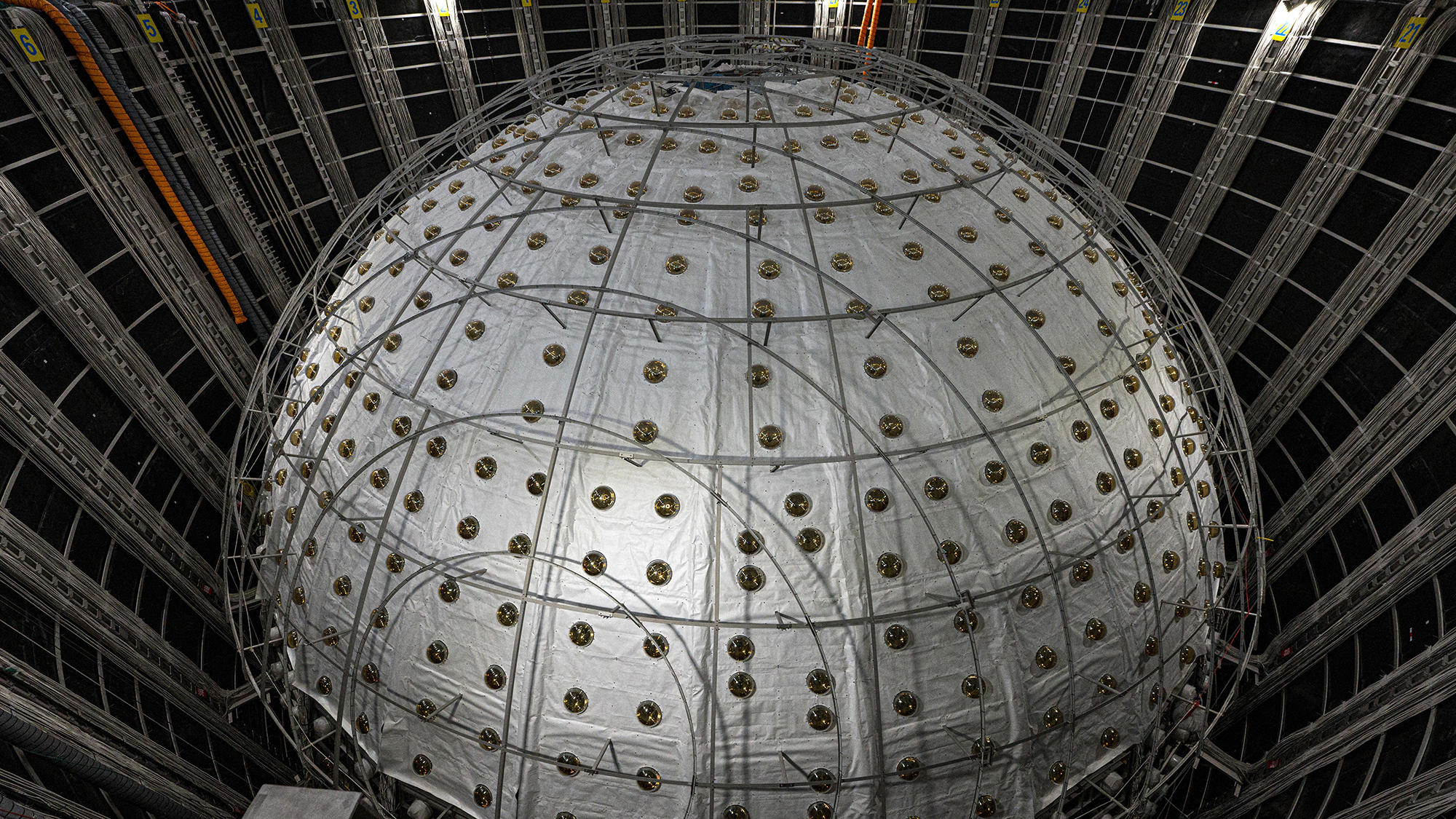Gadgets
China races to unlock one of the biggest mysteries in particle physics

China is banking on a massive laboratory located 2,300 feet underground to help them beat the US in unraveling the mysteries of neutrinos, the universe’s most enigmatic particles. The Jiangmen Underground Neutrino Observatory (JUNO), with a price tag of approximately $311 million, is set to be completed next year after more than a decade of construction. The centerpiece of the facility is a nearly 115-foot-wide stainless steel and acrylic spherical machine designed to measure the incredibly small subatomic particles that travel close to the speed of light. Despite being omnipresent in the universe (with an estimated 100 trillion neutrinos passing through the human body every second), our knowledge of neutrinos and their behavior is limited due to the challenges in detecting them.
Chinese physicists aim to make history by uncovering information that could solve the “mass hierarchy” problem before anyone else. They are determined to crack this scientific puzzle and gain a competitive edge in the field.
“Being the first is everything, and coming in second means nothing,” stated Wang Yifang, the JUNO project manager and director of China’s Institute of High Energy Physics, during a recent tour of the facility with AFP.
Researchers have known for years that neutrinos exist in one of three mass states, but the specific weights of these states remain a mystery. If JUNO can determine these weights, it could contribute to a more comprehensive standard model of particle physics and enhance our understanding of celestial bodies like planets, stars, and supernovas. The potential findings on neutrino mass hierarchy at JUNO might even challenge established scientific principles, particularly in the realm of quantum mechanics.
“If JUNO reveals flaws in our current understanding, it would be a revolutionary discovery,” said Patrick Huber, the director of the Center for Neutrino Physics at Virginia Tech’s American University, on October 17th.
[Related: The Milky Way’s ghostly neutrinos have finally been found.]
Once operational, JUNO will focus on detecting neutrinos emitted by two nuclear power plants located approximately 33 miles away from the underground facility. However, unraveling the neutrino mass hierarchy is not a straightforward task of measuring their minuscule weights—it is estimated to require about six years of experimentation and analysis to reach conclusive answers. During this time, similar projects are expected to commence at facilities like the US-led IceCube observatory in Antarctica and Japan’s Super-Kamiokande lab. While China currently appears to be leading the race, the unpredictable nature of physics research means that any entity with a deep understanding of complex scientific concepts could potentially be the first to unlock the mysteries of neutrino mass hierarchy. Having access to a massive underground steel detector orb definitely doesn’t hurt.
-

 Destination8 months ago
Destination8 months agoSingapore Airlines CEO set to join board of Air India, BA News, BA
-

 Breaking News10 months ago
Breaking News10 months agoCroatia to reintroduce compulsory military draft as regional tensions soar
-

 Gadgets3 months ago
Gadgets3 months agoSupernatural Season 16 Revival News, Cast, Plot and Release Date
-

 Tech News12 months ago
Tech News12 months agoBangladeshi police agents accused of selling citizens’ personal information on Telegram
-

 Productivity11 months ago
Productivity11 months agoHow Your Contact Center Can Become A Customer Engagement Center
-

 Gadgets3 weeks ago
Gadgets3 weeks agoFallout Season 2 Potential Release Date, Cast, Plot and News
-

 Breaking News10 months ago
Breaking News10 months agoBangladesh crisis: Refaat Ahmed sworn in as Bangladesh’s new chief justice
-

 Toys12 months ago
Toys12 months ago15 of the Best Trike & Tricycles Mums Recommend






















